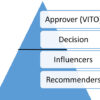Cold calling can be one of the most challenging aspects of sales, but with the right approach, it can also be one of the most rewarding. Recently, I received some invaluable advice from a seasoned sales/BDR professional about the art and psychology of cold calling. Here’s a detailed breakdown of the strategies shared, aimed at making your cold calls more effective and engaging.
1. Framing the Initial Question
- Closed-ended Questions: Start your call with a closed-ended question related to ongoing conversations within the prospect’s company or community.
- Purpose: This helps you quickly understand their current situation and directs the conversation based on their response (yes or no).
2. Adopting a Conversation-centric Approach
- Goal: The main goal of a cold call should be to set up the next conversation, not necessarily to arrange a formal meeting.
- Inclusivity: Frame the call as part of a broader discussion happening in the prospect’s ecosystem, making them feel included and valued.
3. Crafting the Initial Pitch
- Problem Statement: Clearly articulate a high-level problem that the prospect might be facing.
- Solution: Briefly describe how your service or product can address this problem.
- Personalization: Tailor your pitch based on the prospect’s role and profile to make it more relevant.
4. Engaging Through Active Listening
- Natural Conversation: Engage in a natural dialogue to understand what matters to the prospect.
- Wave Theory: Be mindful of the peaks and valleys of stress in the conversation. Use process interrupters to manage these stress points and keep the conversation moving smoothly.
5. Handling Common Objections
- Preparedness: Be ready for common objections like “send me an email” or “I don’t have time.”
- Persistence: Keep the prospect engaged by continuously providing value and addressing their concerns thoughtfully.
6. Strategizing Follow-ups
- Next Conversation: Focus on setting up a follow-up conversation rather than closing a deal on the first call.
- Information Gathering: Use the call to gather valuable information that can be used in future interactions with the same or different prospects.
7. Humanizing Your Approach
- Empathy and Help: Position yourself as someone who is there to help, not just to sell.
- Relatable Scenarios: Use relatable scenarios and small truths to make the conversation more believable and engaging.
8. Practicing and Improving
- Role-playing Sessions: Regularly engage in role-playing sessions focused on specific personas or conversation types.
- Team Feedback: Utilize feedback from your team to refine your approaches and learn from each other’s experiences.
9. Psychological Tactics
- Process Interrupters: Techniques to disrupt the prospect’s initial resistance and bring them into a state of active listening.
- Building Trust: Gradually build trust by providing useful information and showing genuine interest in the prospect’s needs.
Implementation Tips
- Consistency: Apply these strategies consistently across all your cold calls.
- Customization: Tailor your approach based on the prospect’s responses and the specific context of each call.
- Documentation: Document learnings from each call to continuously refine your approach.
Cold calling doesn’t have to be a daunting task. By focusing on understanding the prospect’s context and setting up the next meaningful conversation, you can build stronger relationships and drive better results. These strategies have been game-changers for me, and I hope they will help you master the art of cold calling too.











